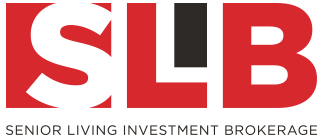
Selling Seniors Housing Communities – Pro Forma vs. Actual Financials – by Jason Punzel
When selling seniors housing communities, many owners question how buyers evaluate pro forma vs. actual financials. Every operating asset is worth the future cash flow it will produce, plus the exit sales price, discounted back to today’s value. One of the best ways to predict future cash flow is by analyzing what the community is currently producing and what it has produced in the past. The more consistent a community has produced cash flow in the past, the more confident a buyer will be that it will in the future. Thus, they will pay more for the community because it will be perceived as lower risk (thus a lower cap rate).
However, often times a community, or any business, will go through financial ups and downs. For example, if a property has an occupancy rate below market (70%) the NOI of the property is probably very low or may even be negative. However, the property still has value. Depending on the quality and location of the property, it may have the potential to achieve a market occupancy rate, and therefore be worth significantly more than simply using the Cap Rate method to determine its value.
A buyer must identify what changes need to take place (capital expenditures, a new marketing plan, a new administrator, etc.), along with the time, cost and likeliness of success to determine the potential future net operating income. Thus, a buyer will utilize a pro forma financial statement to determine what it could be worth in the future, and the cost and risk involved getting there.
Pricing:
Typically, we see properties that are operating significantly below the market getting sold at a price somewhere between its current state (current NOI/Cap Rate) and its pro forma value (pro forma NOI/Cap Rate). The new buyer must be rewarded for solving problems and taking the risks involved in turning around a property. However, the current owner will not sell unless they think they are getting a fair price for giving up the future upside.
A creative structure we have used in this scenario is an Earn Out. This is where a base price is set for the property. Then post closing, the buyer will pay the seller additional sums of money when certain milestones are achieved (usually occupancy based). This allows the seller to receive additional proceeds, but also gives the buyer a low initial cost basis minimizing financing expenses.
Conclusion:
If pro forma financials are based upon realistic assumptions, the seller will achieve some of the future, upside value at sale. However, the buyer will also need to be compensated for the time, money and risk they are taking to achieve the greater future value.
For more information on what your Senior Living Community might be worth, contact Jason Punzel at 630-858-2501 x 233 or punzel@slibinc.com.



